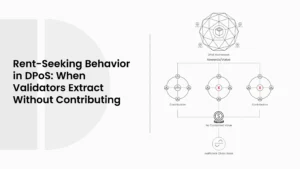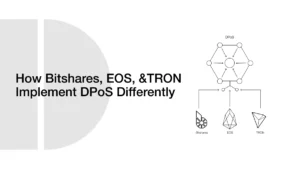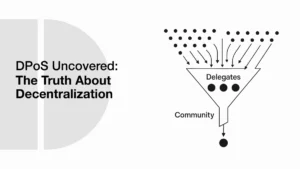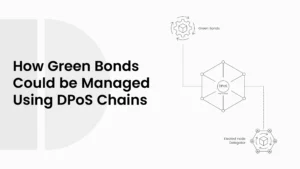How DPoS Can Reshape Mobility Governance with Mobility-as-a-Service (MaaS)?
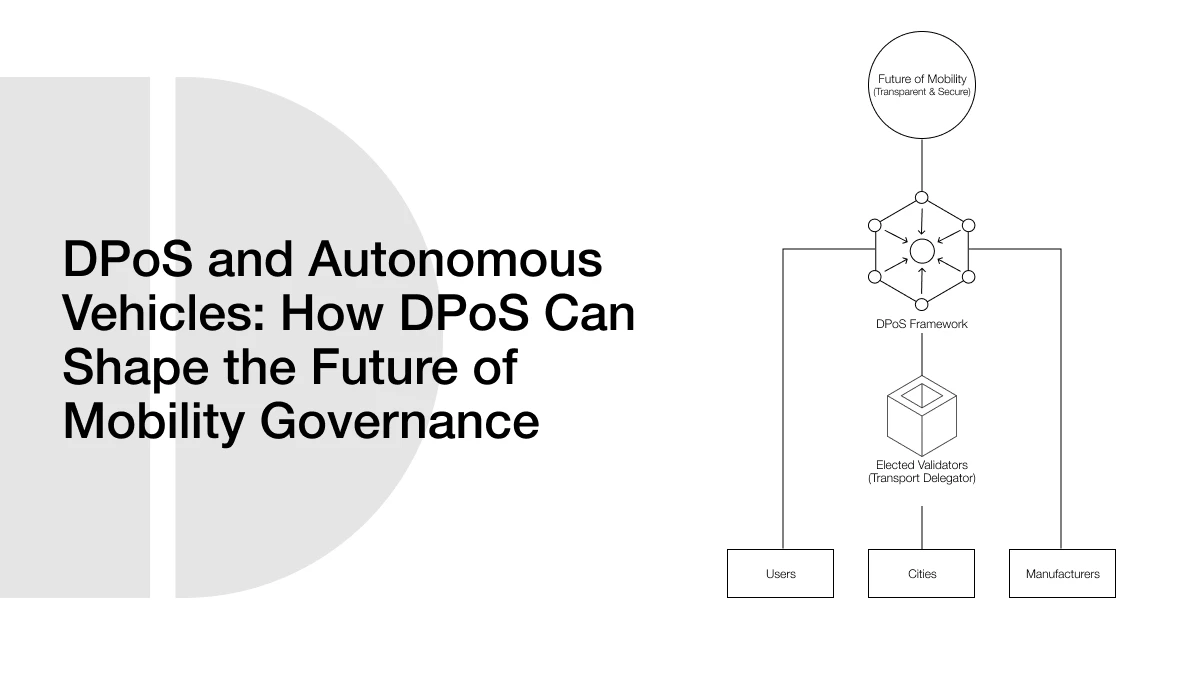
The world of transport is changing fast. For many years, people dreamed of cars that drive on their own. Now, autonomous vehicles, also called AVs, are becoming real. Big companies test them on city roads, and many experts believe they will soon be part of daily life. But when bringing in new technology like AVs, there is always one big question: how will governance be implemented?
- Understanding the Basics of Autonomous Vehicles
- What are Autonomous Vehicles?
- Benefits of Autonomous Vehicles
- Challenges of Autonomous Vehicles
- Traditional Cars vs Autonomous Cars
- What is DPoS? A Guide
- Why DPoS is Special
- DPoS Beyond Crypto
- Comparing PoW, PoS, and DPoS
- The Connection Between DPoS and Autonomous Vehicles
- Why Governance Matters in Mobility
- How DPoS Could Help AVs
- A Model for Mobility-as-a-Service (MaaS)
- Case Studies and Real-World Lessons
- Lessons from European Cities
- Example: Public Transport Integration in Helsinki
- Example: Car Sharing in London
- Example: Copenhagen’s Dilemma
- AV Planning Today vs DPoS Governance Idea
- Key Benefits of Using DPoS for AV Governance
- Transparency
- Speed and Flexibility
- Citizen Voice
- Better Data Sharing
- Challenges of Using DPoS in Mobility
- Technical Issues
- Social and Political Issues
- Cost and Adoption
- Benefits vs Challenges of DPoS for AV Governance
- DPoS and Mobility Governance
- Smart Cities and DPoS
- Mobility Hierarchy
- What Needs to Happen Next
- Conclusion: Is DPoS the Right Model?
- Frequently Asked Questions About DPoS and Autonomous Vehicles
- What is DPoS in simple words?
- How can DPoS be used in transport?
- What are the main benefits of autonomous vehicles?
- Why do people need governance for AVs?
- Can DPoS make AVs more eco-friendly?
- Glossary of Key Terms
Governance means the rules and systems that control how something works. Cars today follow traffic lights, road signs, and city rules. But autonomous cars will need new kinds of regulations. They are not only about drivers anymore, because there will be no human driver in control. Cities and governments must decide who sets the rules, who checks safety, and how AVs fit with buses, trains, and bikes.
This is where Delegated Proof of Stake (DPoS) comes in. DPoS started as a way to keep blockchain networks fair and fast. Instead of one person or one company controlling the system, DPoS lets people vote for delegates. These delegates make decisions for the group. This idea is already used in crypto networks like EOS and TRON. But now many people ask: can the same system help us run autonomous vehicles in cities?
Some researchers believe the answer is yes. They say that DPoS can give a balance of speed, fairness, and trust (González-González et al., 2019). It could allow citizens to vote on mobility rules, and it could record decisions securely using blockchain. Others, however, are not sure. They point out that transport is very complex, and putting it entirely on a blockchain may not solve all the problems.
ALSO READ: How Decentralized Social Media Could Use DPoS for Content Moderation
Understanding the Basics of Autonomous Vehicles
What are Autonomous Vehicles?
Autonomous vehicles, or AVs, are cars that can drive by themselves. They use cameras, sensors, and smart computer programs to “see” the road and make driving decisions. In simple words, they are self-driving cars.
Not all AVs are the same. Some cars today have small features like cruise control or auto parking. These are low-level automations. Full AVs are vehicles that can drive, stop, and turn without human assistance. There are six levels of automation, according to the experts: Level 0 (no automation), Level 1 (partial automation), Level 2 (conditional automation), Level 3 (high automation), Level 4 (high automation), and Level 5 (fully driverless). Currently, testing is mainly between Level 3 and Level 4.
Benefits of Autonomous Vehicles
Many people believe AVs can make transport safer. Human error is the main reason for accidents. If a smart system controls the car, it might reduce mistakes. AVs can also save time because people can relax, work, or watch movies during travel.
AVs could also help elderly people or those who cannot drive. They can offer more freedom and access. Some cities also hope that AVs will reduce traffic jams if they are shared and well-planned.
Challenges of Autonomous Vehicles
But AVs are not perfect. They face many problems too. One big issue is safety. Machines can fail, and sensors may not see well in heavy rain or snow. Hacking and cyberattacks are also risks because AVs are connected to the internet.
Another issue is the cost. AV technology is very expensive right now. Only big companies and research labs can afford large-scale testing. For cities, building special lanes or upgrading traffic systems for AVs will also be costly.
Environmental impact is another concern. If AVs become private cars for everyone, traffic may increase, not decrease. This means more carbon emissions and more pollution. Researchers warn that without good governance, AVs might exacerbate existing problems instead of solving them (Freudendal-Pedersen et al., 2020).
Traditional Cars vs Autonomous Cars
| Feature | Traditional Cars | Autonomous Vehicles |
| Driver Control | Human driver | Computer system |
| Accident Risk | High (human error) | Lower (if safe system) |
| Cost | Lower today | High (still new tech) |
| Travel Experience | Stressful, focus needed | Relax, do other things |
| Environmental Impact | Depends on fuel use | Could reduce or increase (depends on governance) |
What is DPoS? A Guide
Delegated Proof of Stake, or DPoS, is a system used in blockchain. It is a way for many people to agree on what is true in the network. Instead of all people doing the same work, like in Bitcoin, DPoS lets people vote.
In DPoS, token holders vote for special representatives. Such representatives are referred to as delegates. The delegates confirm the transactions, construct new blocks, and secure the network. When a delegate fails to perform the job properly, the people can vote them out.
In short words, DPoS is like a digital election system for running a blockchain.
Why DPoS is Special
DPoS is faster than many other systems. Bitcoin can be very slow because every computer must check the work. DPoS uses only a small number of delegates, so decisions happen quickly. This is good when people need fast results.
DPoS also uses less energy. DPoS does not require heavy machines, unlike Proof of Work (PoW), where computers consume a lot of electricity as they solve puzzles. This is good for the environment.
The other reason why DPoS is special is that it is more democratic. Citizens are given a chance to vote and choose their decision-makers. This way, the power is not in one place, and the community has a voice.
DPoS Beyond Crypto
At first, DPoS was only used for digital money and blockchain projects like EOS and TRON. But the system can be used in other places too. Any system that needs fast decisions and fair voting could try DPoS.
That is why some experts say DPoS might also work in mobility governance. If people can use it to run a global money system, why not manage fleets of autonomous vehicles in cities?
Comparing PoW, PoS, and DPoS
| Feature | Proof of Work (PoW) | Proof of Stake (PoS) | Delegated Proof of Stake (DPoS) |
| Speed | Slow (Bitcoin ~10 min) | Faster than PoW | Very fast (seconds) |
| Energy Use | Very high (uses electricity) | Low energy | Very low energy |
| Who Makes Decisions | Miners with computers | Token holders (random selection) | Voted delegates (few representatives) |
| Community Power | Small, only miners decide | Bigger, more token holders | Strong, because people vote |
| Best Use | Secure but slow money | General crypto networks | Fast systems, possible for AVs |
The Connection Between DPoS and Autonomous Vehicles
Why Governance Matters in Mobility
Autonomous vehicles are not just normal cars. They are smart machines that work with data, sensors, and software. Because of this, they need stronger rules and systems. If there are no rules, AVs could create problems instead of solving them.
For example, if everyone owns a private AV, traffic could increase, and pollution might go up. Some studies already warn that AVs may add more trips to cities instead of reducing them (Grindsted et al., 2022). That means good governance is the key. Governance can help decide how AVs are used, who controls them, and how they fit with buses, trains, and bikes.
ALSO READ: Token Holder Cartels: Can DPoS Stop Concentrated Power Structures?
How DPoS Could Help AVs
This is where DPoS comes in. DPoS is a system where people vote for delegates. In mobility, this could mean that citizens vote for rules on AVs. For example, people could vote on the number of AVs allowed in the city center. Or they could vote on whether AVs must run on renewable energy.
Delegates, once elected, could manage road usage, parking rights, and AV routes. If they fail to keep things fair, the people could vote them out. This makes the system flexible and democratic. It also builds trust because the process is recorded on the blockchain and cannot be changed.
In simple words, DPoS gives people a voice in how AVs run. It is not only about technology but also about fairness.
A Model for Mobility-as-a-Service (MaaS)
The second area where DPoS can be useful is the Mobility-as-a-Service (MaaS). MaaS implies that not everyone owns a car. Instead, they share cars, bikes, buses, or AVs when they require them. This model is considered the future of transport since there is less waste and emissions.
MaaS is complicated, though. The number of involved players is large, including private companies, governments, and citizens. When one group has excess power, the system will collapse. In DPoS, the rules can be established whereby every group is included in the decision. Citizens can push for more buses or shared AVs, while companies can compete under fair rules.
So, DPoS could be the balance point that keeps MaaS fair and sustainable. It could make sure AVs serve not only the rich but everyone in the city.
Case Studies and Real-World Lessons
Lessons from European Cities
Autonomous vehicles are already part of city planning in Europe. Many cities want to use them for better transport. But studies show most plans are weak and unclear. For example, many plans only talk about AVs in general, but they do not explain how AVs will work with buses, trains, or bikes.
This creates a risk. Without strong rules, AVs may add more traffic instead of reducing it. Researchers say cities need better governance systems. DPoS could be one of those systems because it gives people and local communities a chance to vote on how AVs are used.
Example: Public Transport Integration in Helsinki
Helsinki is testing small AV buses that connect with metro stations. The idea is that AVs can carry people for short trips, and then passengers take the metro for more extended travel. This is good because it supports Mobility-as-a-Service (MaaS).
But there is still a challenge. Who decides how many AV buses run? Who sets the price? At present, those decisions are made by the government and private companies. If DPoS were used, citizens could vote on these rules. This would make the system fairer and more trusted.
Example: Car Sharing in London
London has many plans for AVs. The city supports car-sharing services because they reduce the need for private cars. But there is also a warning. If AVs become too easy and cheap, people might stop using buses and bikes. This could increase traffic and pollution.
DPoS could help here. With DPoS, citizens could vote for policies that limit private AVs in the city center. They could also vote to give more support to shared AVs. This way, the system does not harm the environment and still gives people fair choices.
Example: Copenhagen’s Dilemma
Copenhagen is a city that loves bikes. Almost one-third of trips are made on bicycles. The city also has strong climate goals. But studies show that if AVs become too popular, traffic may rise, and emissions could go up.
DPoS could give people in Copenhagen more power to protect bike culture. If citizens voted on AV rules, they might say that AVs must always prioritize bike lanes and public transport. This would keep the city’s green goals safe.
AV Planning Today vs DPoS Governance Idea
| City | Current AV Planning | How DPoS Could Help |
| Helsinki | AV buses tested with metro connection | Citizens vote on the number of buses, price, and routes |
| London | Supports car sharing, but risk of more traffic | People vote to limit private AVs and support shared AVs |
| Copenhagen | Strong bike culture, but AVs may increase traffic | Citizens vote to protect bike lanes and climate goals |
So, the lessons from these cities are clear. Planning is happening, but governance is weak. DPoS could bring fairness, trust, and better balance between AVs, public transport, and the environment.
Key Benefits of Using DPoS for AV Governance
Transparency
Transparency is one of the greatest advantages of DPoS. All decisions of the delegates can be entered in the blockchain. That is, no one can suddenly alter the rules. Users can know what has been resolved, when it was resolved, and who voted on it. This builds trust in the system.
In transport, transparency is very important. If a city allows more AVs in one area, citizens want to know why. With DPoS, there is no hidden process. Everything is open for review.
Speed and Flexibility
Cities change fast. Traffic needs and transport demands can shift in weeks or even days. Traditional government planning is often slow. It can take years to change transport laws.
DPoS can be much faster. If a rule does not work, delegates can update it quickly after new votes. For AVs, this is important because technology moves very fast. A flexible system is better for keeping up with real needs.
ALSO READ: DPoS Governance Insurance: Can Delegators Hedge Against Delegate Failure?
Citizen Voice
In most cities, people do not get a real voice in transport planning. Decisions are made by governments or companies. With DPoS, this changes. Citizens vote directly for the delegates who shape the rules.
For example, if people want more AV buses and fewer private AVs, they can vote for delegates who support that idea. If delegates stop listening, citizens can replace them. This creates a living, democratic system for mobility.
Better Data Sharing
Autonomous vehicles create a massive amount of data. This includes where they go, how they drive, and even their safety. Typically, private companies own this data. That makes it hard for cities or citizens to use it.
If DPoS is applied, data can be shared on the blockchain. It can be stored securely where everyone trusts the record. This would allow governments, companies, and citizens to work with the same data to improve the system.
Challenges of Using DPoS in Mobility
Technical Issues
One of the first challenges is technology itself. Autonomous vehicles need to make decisions in real-time. That means decisions must be made in seconds or even less. Blockchain systems, even fast ones like DPoS, may sometimes struggle to keep up with this speed.
Another issue is scaling. A city may have thousands of AVs on the road at the same time. Managing all of them on a DPoS network could require big upgrades. Without strong systems, the network may become slow or unstable.
Social and Political Issues
Even if the system is democratic, not everyone will vote. Some people may not care, while others may not understand the technology. This can create low participation, where only a small group controls the votes.
There is also the risk of delegate cartels. If only a few delegates stay in power, they might act like gatekeepers. This problem has already been seen in some blockchain networks.
Cost and Adoption
Another challenge is cost. Building a DPoS system for AVs would need new infrastructure, new software, and robust security measures. Cities may find this very expensive at first.
Also, governments may resist change. They may prefer to keep control with traditional systems instead of using blockchain. Private companies might also fight against sharing their AV data with everyone.
Benefits vs Challenges of DPoS for AV Governance
| Aspect | Benefits (DPoS for AVs) | Challenges (DPoS for AVs) |
| Transparency | Clear records of all rules and decisions | Complex to explain to normal citizens |
| Speed & Flexibility | Rules can change quickly with new votes | Scaling for thousands of AVs may be hard |
| Citizen Voice | People can vote for mobility policies | Low participation or delegate cartels |
| Data Sharing | Secure and trusted data for all parties | Companies may resist open data sharing |
| Adoption | Could build trust and fairness in AV governance | High cost and political resistance |
So while DPoS offers strong benefits, it is not free from problems. The real challenge is how to design a system that works in practice.
DPoS and Mobility Governance
Smart Cities and DPoS
Many cities today call themselves “smart cities.” They use sensors, apps, and connected systems to manage traffic, electricity, and even waste. Autonomous vehicles are often seen as part of this smart city dream.
DPoS could become the backbone of such systems. It can give cities a way to govern AVs transparently and fairly. Instead of one company making the rules, decisions could be shared between citizens, governments, and businesses. This matches with the United Nations’ Sustainable Development Goal 11 (SDG 11), which is about making cities inclusive, safe, and sustainable (Grindsted et al., 2022).
Mobility Hierarchy
Experts also remind us that AVs should not replace all other modes of transport. A healthy city still needs walking, cycling, and public transport at the center. Cars, even autonomous ones, should be lower in the transport ladder (Banister, 2008).
If DPoS is used, citizens could help decide this hierarchy. For example, people could vote to make sure bike lanes are always protected, or that buses get priority over AVs in busy areas. This way, AVs do not damage the balance of sustainable transport.
What Needs to Happen Next
For DPoS to really work in mobility governance, more testing is needed. Cities could start small projects where AV buses or shared AVs are governed using DPoS voting. Citizens could test apps where they vote on transport choices.
At the same time, governments must work with researchers and companies. They need to find a balance between technology and social good. It is not enough to just put AVs on the road. The governance system around them must also be strong, fair, and transparent.
If done right, DPoS can make AVs part of a democratic and sustainable transport system. If ignored, AVs may simply repeat the same mistakes as old cars, more traffic, more emissions, and more inequality.
Conclusion: Is DPoS the Right Model?
Autonomous vehicles promise a future with safer and smarter transport. But without strong governance, they may also bring more traffic, more emissions, and more problems. Delegated Proof of Stake (DPoS) offers a new way to govern AVs.
It is transparent, fast, and gives citizens a real voice. People can vote for rules, delegates can make quick decisions, and blockchain can keep records safe. This could make mobility fairer and more democratic.
But DPoS is not perfect. It faces challenges like low participation, possible delegate cartels, and high cost. Cities must design the system carefully. If they only focus on technology and forget about people, DPoS will not work.
The answer, then, is balance. DPoS can be a powerful tool, but it must be combined with good city planning, strong public transport, and respect for walking and cycling. If done right, AVs plus DPoS may give us the future of transport that is not only smart but also sustainable and fair.
Frequently Asked Questions About DPoS and Autonomous Vehicles
What is DPoS in simple words?
It is a voting system on blockchain where people choose delegates to make decisions for the network.
How can DPoS be used in transport?
It can help citizens vote for rules about AVs, like where they can drive, how many should be allowed, or how they connect with public transport.
What are the main benefits of autonomous vehicles?
They can reduce accidents, save time for passengers, and give freedom to people who cannot drive.
Why do people need governance for AVs?
Because without rules, AVs might increase traffic and pollution instead of reducing them.
Can DPoS make AVs more eco-friendly?
Yes, if citizens vote for rules that require AVs to run on renewable energy or to support shared transport instead of private use.
Glossary of Key Terms
- Autonomous Vehicle (AV): A self-driving car that uses sensors and software instead of a human driver.
- DPoS (Delegated Proof of Stake): A blockchain system where people vote for delegates who make decisions.
- Mobility-as-a-Service (MaaS): A transport model where people use shared cars, buses, bikes, and AVs instead of owning their own car.
- Governance: The process of making and applying rules for a system.

